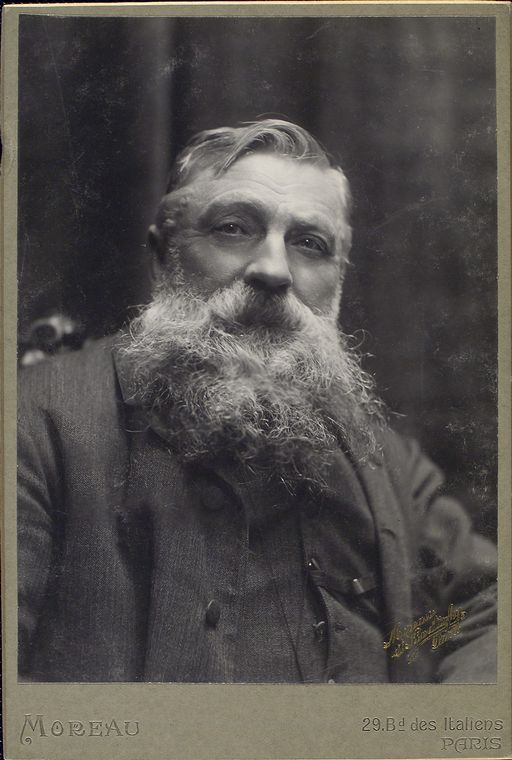- Profession: Sculpter.
- Residences: Paris.
- Relation to Mahler:
- Correspondence with Mahler:
- Born: 12-11-1840 Paris, France.
- Died: 17-11-1917 Meudon, Ile-de-France, France.
- Buried: 00-00-0000 Muse?e Rodin, Meudon, Ile-de-France, Paris, France.
See also:
François-Auguste-René Rodin, known as Auguste Rodin, was a French sculptor. Although Rodin is generally considered the progenitor of modern sculpture, he did not set out to rebel against the past. He was schooled traditionally, took a craftsman-like approach to his work, and desired academic recognition, although he was never accepted into Paris’s foremost school of art.
Sculpturally, Rodin possessed a unique ability to model a complex, turbulent, deeply pocketed surface in clay. Many of his most notable sculptures were roundly criticized during his lifetime. They clashed with the predominant figure sculpture tradition, in which works were decorative, formulaic, or highly thematic. Rodin’s most original work departed from traditional themes of mythology and allegory, modeled the human body with realism, and celebrated individual character and physicality. Rodin was sensitive to the controversy surrounding his work, but refused to change his style. Successive works brought increasing favor from the government and the artistic community.
From the unexpected realism of his first major figure – inspired by his 1875 trip to Italy – to the unconventional memorials whose commissions he later sought, Rodin’s reputation grew, such that he became the preeminent French sculptor of his time. By 1900, he was a world-renowned artist. Wealthy private clients sought Rodin’s work after his World’s Fair exhibit, and he kept company with a variety of high-profile intellectuals and artists. He married his lifelong companion, Rose Beuret, in the last year of both their lives. His sculptures suffered a decline in popularity after his death in 1917, but within a few decades, his legacy solidified. Rodin remains one of the few sculptors widely known outside the visual arts community.
By 1900, Rodin’s artistic reputation was entrenched. Gaining exposure from a pavilion of his artwork set up near the 1900 World’s Fair (Exposition Universelle) in Paris, he received requests to make busts of prominent people internationally, while his assistants at the atelier produced duplicates of his works. His income from portrait commissions alone totalled probably 200,000 francs a year. As Rodin’s fame grew, he attracted many followers, including the German poet Rainer Maria Rilke, and authors Octave Mirbeau, Joris-Karl Huysmans, and Oscar Wilde. 1902 with Klimt at a garden party in Vienna (Prater).
Rilke stayed with Rodin in 1905 and 1906, and did administrative work for him; he would later write a laudatory monograph on the sculptor. Rodin and Beuret’s modest country estate in Meudon, purchased in 1897, was a host to such visitors as King Edward, dancer Isadora Duncan, and harpsichordist Wanda Landowska. Rodin moved to the city in 1908, renting the main floor of the Hôtel Biron, an 18th-century townhouse. He left Beuret in Meudon, and began an affair with the American-born Duchesse de Choiseul.
Fifty-three years into their relationship, Rodin married Rose Beuret. The wedding was 29 January 1917, and Beuret died two weeks later, on 16 February. Rodin was ill that year; in January, he suffered weakness from influenza,and on 16 November his physician announced that “congestion of the lungs has caused great weakness. The patient’s condition is grave.” Rodin died the next day, age 77, at his villa in Meudon, Île-de-France, on the outskirts of Paris.

